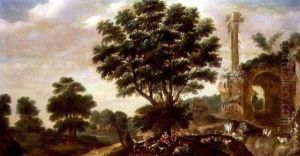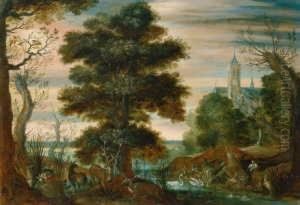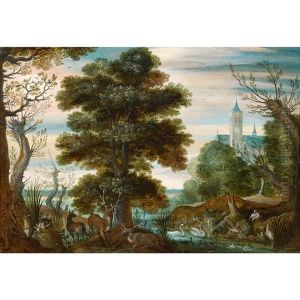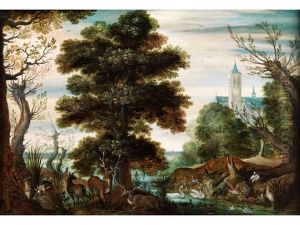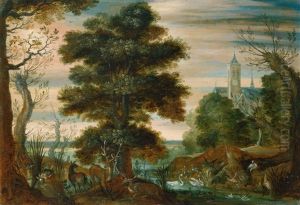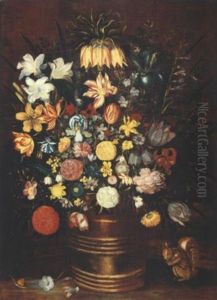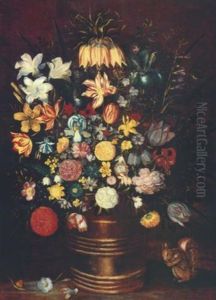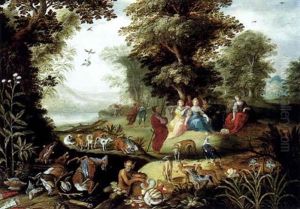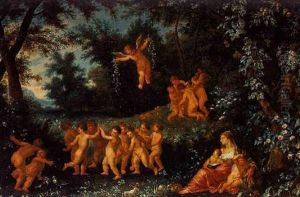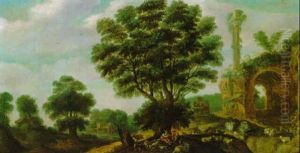Samuel van den Hecken Paintings
Samuel van den Hecken was a Flemish painter and draughtsman born in 1620 in Antwerp, a city renowned for its vibrant artistic community during the 17th century. He is best known for his contributions to the Baroque period, a movement characterized by dramatic expression, rich coloration, and bold manipulation of light and shadow. Van den Hecken's early life is somewhat obscured by the scant records of the time, but it is known that he was active in the thriving cultural landscape of Antwerp, which was home to many artists who would go on to have significant impacts on European art.
Van den Hecken's oeuvre consists primarily of genre scenes, landscapes, and still lifes, reflecting the broad spectrum of subjects popular among Flemish artists of the period. His genre scenes, often imbued with a lively sense of narrative and meticulous attention to detail, depict various aspects of 17th-century life, ranging from the domestic interiors of the Flemish bourgeoisie to the more raucous and earthy aspects of peasant life. His landscapes, on the other hand, reveal a keen eye for the atmospheric effects of light and a deep appreciation for the natural beauty of the Flemish countryside. The still lifes, for which he is perhaps best known, are celebrated for their intricate detail, vibrant color palette, and the skillful rendering of textures, from the gleam of metal and glass to the velvety surface of fruit and flowers.
Despite the quality of his work, Samuel van den Hecken remains a relatively obscure figure in art history, overshadowed by contemporaries such as Peter Paul Rubens and Anthony van Dyck. However, his paintings offer a valuable glimpse into the cultural and social milieu of 17th-century Flanders, reflecting both the everyday life of its people and the era's artistic trends. Van den Hecken's contributions to the Baroque movement, particularly his still lifes, have been recognized for their influence on later artists, particularly in the way they capture the transient beauty of their subjects with both realism and a sense of wonder.
Samuel van den Hecken died in 1686 in Antwerp. While his work did not gain the widespread acclaim of some of his contemporaries during his lifetime, modern scholars have begun to reassess his contributions to the Flemish Baroque. Today, his paintings can be found in various museums and private collections, where they continue to be appreciated for their beauty, technical skill, and historical value.
